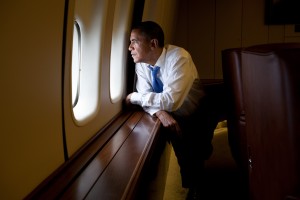Most comparisons of President Obama’s prospects of reelection in 2012 and his 2008 campaign focus on factors that he now lacks. He has necessarily lost the novelty, the sense of history-in-the-making, and the image of being a blank slate upon which voters could project their visions of change. Statements about his strengths in the 2012 election cycle are much less common, and these observations usually revolve around his remarkable fundraising skills or the deep divisions within the Republican Party. One of his greatest advantages, his electoral strategy, is rarely mentioned. To most voters and even to those who consider themselves politically informed, Obama’s 2008 strategy is still something of a mystery. It was a magical combination of technology, volunteers, young people, and momentum that propelled him to the Presidency. For me, it certainly was. Yet in January of this year, I received two opportunities to explore and understand the Obama campaign. I read The Audacity to Win, campaign manager David Plouffe’s account of the day in and day out decisions made on the 2008 campaign trail and became a Spring Organizing Fellow, or volunteer coordinator, for the 2012 Massachusetts campaign. Evaluating the 2012 campaign through Plouffe’s lens of 2008 demonstrates that a strategy emphasizing volunteers, metrics, and discipline will be just as formidable this cycle as it was in the last.
Component 1: The Volunteers
Many campaigns advertise themselves as volunteer-driven, but few campaigns have integrated volunteers as well as the Obama campaign. Plouffe describes how their approach consisted of giving more to and expecting more from their volunteers. Their philosophy is embodied in the motto, “Respect. Empower. Include.” Since the beginning of the Democratic Primary in Iowa, Obama strove to develop a system of volunteer leaders and coordinators. He wanted to include these volunteers not only in phone banks and canvasses, but also in high-level strategy planning sessions. Especially poignant is the scene in which a victorious Obama on the night of the Iowa primary chooses to spend time alone with his young Iowa volunteer leaders and emerges from the room with tear-laden eyes. This incident epitomizes the depth of involvement and connection between the campaign and its volunteers. Today, the campaign strives to hold itself to a very high standard of volunteer leadership. Obama for America Massachusetts has only one paid staff member, state director Carl Nilsson. All other positions from regional leaders to volunteer captains are not only unpaid, but can demand up to 15 hours a week part time or 40 hours a week full time. The Obama campaign is unafraid to ask more of its volunteers and to trust its volunteers to carry the campaign. This will enable it to sends its campaign deep into communities in this cycle.
Component 2: The Metrics
The campaign’s strategy is driven by metrics. In The Audacity to Win, Plouffe’s passion for numbers and statistics shines through the pages. He repeatedly describes field data, delegate math, and methods for tracking volunteers and donations. In 2012, the love for data has evolved into a phrase that every Organizing Fellow hears from the team leader at least once a week: “If it isn’t in VAN [the Democratic database], then it didn’t happen.” “What are your numbers?” a phrase used equally often, also highlights the campaign’s commitment to monitoring number of contacts, meetings, or new volunteers added. While Ron Paul’s campaigns have succeeded in attracting a dedicated core of volunteers, they fail to reach a broader base. Obama’s system enables a focus on quantity as well as quality of outreach. Simply increasing the number of supporters is just as important an indicator of success as building commitment and enthusiasm among these supporters.
Component 3: Discipline
The essential component of Obama’s 2008 campaign was its discipline. Plouffe credits the discipline to the President’s personality, saying, “one of the President’s greatest strengths, and therefore his organization’s strength, is his discipline: once a course is set, he is determined not to let a chorus of critics alter that game plan.” Without this discipline, the campaign would have abandoned the ultimately successful technique of expanding the electorate by registering new voters. Without this discipline, they would have stopped courting the youth vote. Without this discipline, their victory would have been unlikely as they responded to the media’s and Democratic establishment’s criticisms and waffled between methods. Even when pundits like Democratic strategist Peter Fenn warn, “It is it is very difficult for the Obama campaign to duplicate the groundswell of enthusiasm and commitment to Change You Can Believe In,” and claim that the energy and passion no longer exist, the campaign’s focus will continue to be on volunteers, on youth, and on speaking to one voter at a time. The clear and consistent strategy represents a significant advantage. It will enable the campaign to concentrate on execution and action rather than decision-making and debates over strategy.
